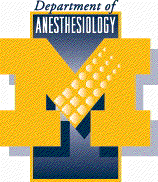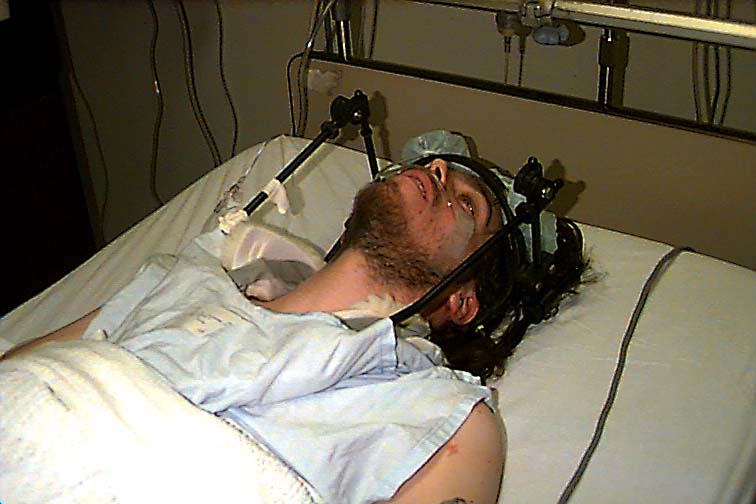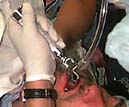 Go to Front Page
Go to Front Page  Go to Scenarios
Go to Scenarios  Go
to Techniques
Go
to Techniques
Dilemmas
Contents of this bit:
Awake or Asleep
In emergency intubation the first decision is if the patient will be kept
awake or have anesthesia induced. Keeping a patient awake has the benefit
of maintaining spontaneous ventilation and protection of the airway. Inducing
a patient takes away their ability to ventilate, and although it may return
shortly, it may be long enough to cause the patient to become significatly
hypoxic if they cannot be ventilated by any means.
Oral or Nasal
The next decision is whether the patient will be intubated nasally or orally.
Nasal intubation's most important advantages over oral in the emergent intubation
is that it can be done with little neck motion and the patient does not
have to be placed supine, a postition some patients in respiratory distress
cannot tolerate. However, most anesthesia practioners are more skilled at
oral intubation and would choose this option.
Laryngoscopy or Blind Intubation
The practioner must decide between blind versus direct laryngoscopy (DL)
versus fiberoptic. Blind intubation usually is done in a spontaneously ventilating
patient, has the advantage of needing minimal equipment and is usually done
as a blind nasal. DL is the most common way the anesthetist intubates and
is probably the way they are most skilled. Fiberoptic can be beneficial
in maintaining a spontaneously ventilating patient and is a useful alternative
in the difficult airway. Fiberoptic equipment is cumbersome, requires a
cooperative patient and in the emergency situation the patient may not be
optimized for a fiberoptic intubation, i.e. given an antisialogogue, able
to be adequately topicalized, etc.
To Paralyze or Not
Finally, the decision to use muscle relaxants must be made. The opinion
has been expressed that muscle relaxants are never indicated in the elective
intubation because of the dangers of loss of all airway. Others feel that
it is important to intubate as soon as possible and that the first attempt
should be the best attempt and should be performed under optimal conditions.
Cricoid Pressure
The use of cricoid pressure (Sellick's maneuver) should be used in all cases
in which the patient no longer protects his/her own airway [reference
14].
This is perform by placing two fingers on the cricoid cartilidge and pressing
firmly back on the body of the sixth cervical vertebra so as to occlude
the esophagus and prevent stomach contents from entering the pharynx where
they can be aspirated. This should be performed as the patient is going
to sleep. The patient should be informed that they will feel this sensation
as they are being induced. Care must be taken that the assistant's hand
not obstruct proper placement of the laryngoscope if the patient's neck
is short and obese. If the person who is performing cricoid pressure is
inexperienced, then they can actually make it more difficult for the person
who is intubating.
Cricoid pressure should be held in place until tube placement is confirmed.
A theoretical concern of this is esophageal rupture in the event of vomiting.
An added benefit of cricoid pressure is that the patient can be ventilated
with cricoid pressure with less air insufflating the stomach.
Bag and Mask Ventilation
Before choosing what technique to intubate with, the clinician should remember
to perform simple airway maneuvers to improve ventilation/oxygenation. These
manuevers comprise the chin lift, jaw thrust, head tilt and mask ventilation/assistance.
Often these are adequate to maintain oxygenation to temporize the situation
allowing more time to make the decision on what technique to use to intubate
the patient.
 Go to Front Page
Go to Front Page  Go to Scenarios
Go to Scenarios  Go
to Techniques
Go
to Techniques